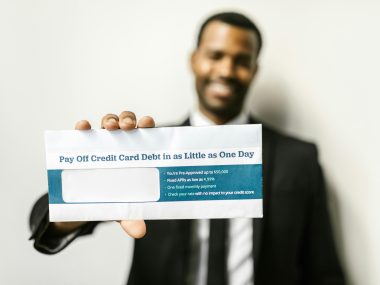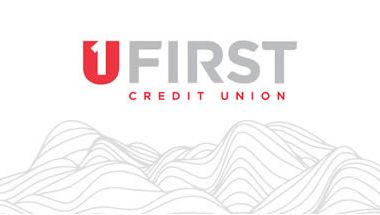Starting the financial waters when your credit score is less than stellar can be intimidating, especially when considering applying for a credit card. However, a poor credit history doesn’t mean you’re out of options. The right credit card can help you rebuild your credit profile.
We explore practical strategies and tips to help you understand how to apply for a credit card with bad credit.
What Are My Options For Applying For A Credit Card If I Have Bad Credit?
When considering a credit card application, individuals with bad credit may feel limited. Yet, several avenues remain open to them:
Secured credit cards are specifically tailored to consumers with less-than-perfect credit. These cards require a security deposit that serves as your credit limit and financially shields the card issuer. This deposit is fail-safe, giving lenders the peace of mind to extend credit to riskier applicants.
When researching options, subprime credit cards come up often in the mix. These are designed with the bad credit demographic in mind. However, the convenience of being targeted for such a group is weighed down by typically higher fees and interest rates.
Don’t overlook store credit cards, which generally offer easier approval processes. They are a potential stepping stone, although they come with limitations such as restricted use and possibly steep interest rates.
An indirect approach is to become an authorized user on another person’s card. This move can help your credit score piggyback on their responsible usage without the need for a direct application process.
Explore options such as credit-builder loans or alternative credit cards. These products are innovative in using more than conventional credit scores to evaluate creditworthiness, considering other factors such as income and spending habits.
Specific Contextual Examples:
- A $500 deposit on a secured credit card gives you a $500 credit limit.
- Subprime cards might charge a $75 annual fee on day one, reducing your initial available credit.
- Store cards like those for department stores or gas stations often approve individuals with lower credit scores.
- An authorized user on a prime card could see their score rise if the main account holder maintains a low balance and pays on time.
- Credit-builder loans hold the money you borrow in an account until you’ve paid off the loan, effectively helping you save money while building credit.
These cards and strategies serve as lifelines, means to access credit and embark on the journey of improving your credit standing. Remember that regardless of the type, responsible management of your new credit card is essential.
Use your card wisely, pay off balances promptly, and watch your credit grow.
Is It Possible To Get Approved For A Credit Card With A Poor Credit History?
Securing a credit card approval with a blemished credit history can be daunting yet feasible. It’s critical to be aware of the distinct products designed to accommodate varying credit backgrounds.
- Despite the challenges, credit card offers are on the market for individuals with poor credit scores. It’s a matter of finding those tailored to low-credit consumers.
- Among these, secured credit cards stand out as a robust option. With security deposits equaling the credit limit, they dramatically minimize risk factors for issuers.
- There also exists unsecured credit cards catering to bad credit profiles, albeit usually laden with higher interest rates and numerous fees.
- Authorized user status is yet another route. Through responsible borrowing, the primary cardholder’s credit habits can positively impact your credit report.
- Vigilant comparison shopping is key to identifying cards aimed at bad credit applicants. Reading the fine print avoids falling prey to predatory terms and ensures that the card you apply for is realistically within your reach.
Concrete Recommendations:
- Check which low-credit cards offer the best terms regarding fees and interest rates.
- Consider a secured card with a refundable deposit if you plan to maintain minimal balances.
- Look for unsecured card options with transparent terms, and do not exploit your credit situation with exorbitant fees.
- Ask a trusted individual if they would be willing and able to add you as an authorized user.
- Use online comparison tools to help filter credit card options suitable for those with a poor credit history.
Possessing poor credit does not make obtaining a credit card an impossibility. It simply alters the landscape of options. Staying on course with regular payments and sensible credit use, approval for more favourable credit cards in the future is well within reach.
What Should I Look Out For When Choosing A Credit Card For Bad Credit?
Selecting the right credit card when you have bad credit requires careful consideration of several key factors:
Interest Rates: It’s no secret that cards tailored for those with bad credit carry heftier interest rates—or APRs. These higher rates can substantially inflate the cost of carrying a balance month-to-month.
With numerous fees possibly attached, it’s crucial to assess all the fees. This includes annual charges, application fees, and potential maintenance costs that can quickly tip the scales against any card’s benefits.
Regarding your credit limit, aim for a card that offers a balance between being too low to be restrictive yet not so high that it might tempt further debt.
It’s pivotal that the lender reports to all three major credit bureaus. This practice ensures that your improved credit behaviour positively impacts your credit score.
Finally, consider any additional benefits on offer. Extra perks, such as complimentary credit monitoring services, flexible payment arrangements, or educational resources about managing credit effectively, can prove immensely useful for those rebuilding credit.
In-Depth Insights Via List:
- APRs on bad credit cards can range significantly; favour those with lower rates.
- Watch out for annual fees exceeding $100, eating into your available credit.
- A card with a $300 limit might offer a good start without encouraging excessive spending.
- Confirm that the card issuer reports to Experian, Equifax, and TransUnion to get full credit for your on-time payments.
- Perks like free access to your credit score can keep you informed about your credit-rebuilding progress.
A cautious approach when choosing a credit card for bad credit can pave the way for a much more beneficial financial future. Always scrutinise the details to ensure you select a card that aligns with your goals of credit repair and effective money management.
Are There Any Steps I Can Take To Improve My Chances Of Getting A Credit Card Despite Having Bad Credit?
While a low credit score can limit your card options, there are measures you can take to bolster your chances of credit card approval:
Begin by reviewing your credit reports. Inaccuracies on these documents can unfairly penalize your score, so promptly disputing any errors you uncover can lead to near-term improvements in your credit.
The realm of secured credit cards is where your pursuit might fruitfully start, thanks to typically lower credit requirements. They also play a crucial role in reconstructing your credit history.
Stay looking for credit cards specifically engineered for consumers with a rocky credit past. Bear in mind, though, that they could come with a higher cost of borrowing.
Taking on the role of an authorized user offers a unique opportunity to reap the advantages of another’s positive financial reputation without shouldering direct charge responsibility.
Beyond your credit score, evidencing a stable income or lower debt levels can sway card issuers by showing that you are managing your finances responsibly.
Actionable Strategies:
- Obtain a free copy of your credit report from sites like AnnualCreditReport.com and look for errors.
- Shop for a secured credit card with reasonable deposit requirements and clear terms.
- Research cards especially for bad credit, but prioritize transparent fees and reasonable APRs over immediate credit access.
- Discuss the possibility of becoming an authorized user with someone you trust financially.
- Pay down existing debt where possible and have proof of income ready when applying for new credit.
Improving your chances of obtaining a credit card with bad credit is part skill and part strategy. By taking conscientious steps towards credit improvement and being selective with your applications, securing that critical piece of plastic—and the credit boost that comes with it—is an achievable dream.
Planning Your Financial Comeback
Applying for a credit card with bad credit won’t be an insurmountable hurdle. With the right knowledge and tools, you can access financial products designed to help you rebuild and gradually restore a positive credit standing.
The key is to manage your new credit responsibly, keep debt under control, and stay informed about your credit progress. Remember that patience is also vital, as credit repair is a journey, not a sprint.
Your commitment today can lead to a brighter financial future, armed with a credit card that supports rather than hinders your recovery.
Please Help Share This Post









